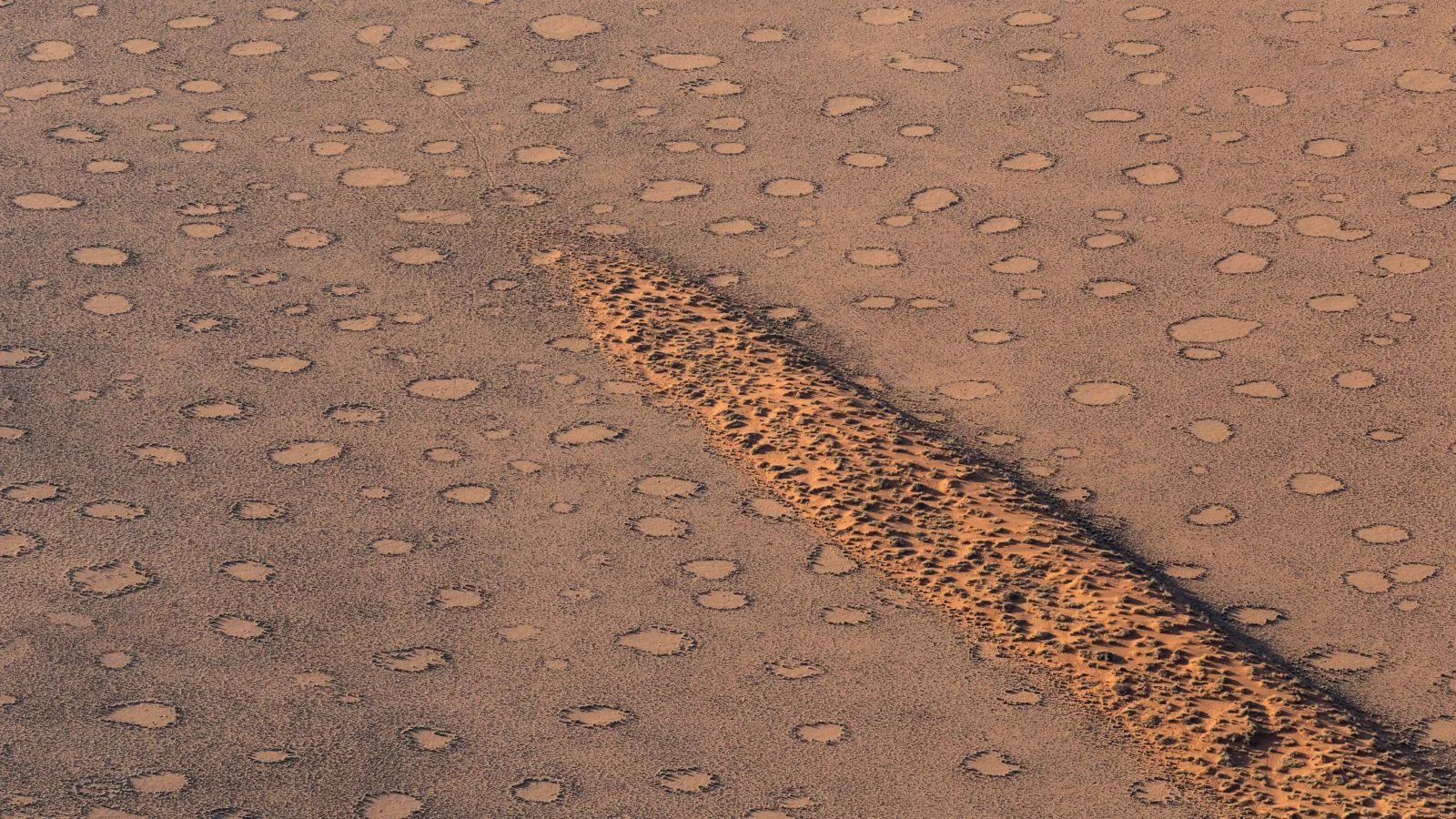uaetodaynews.com — Plants self-organize in a ‘hidden order,’ echoing pattern found across nature
Scientists have uncovered a “hidden order” in drylands across the planet, where plants follow disordered hyperuniformity — a layout that looks random and disorganized up close but adheres to a clear pattern when viewed from farther away.
The findings explain phenomena like “tiger bush” in West Africa, where bands of plants look like tiger stripes from above, or “fairy circles” in Namibia that look like spots from far away but are actually clumps of plants. These plants are self-organized in a way that helps them cope with drought and function in extreme conditions.
In the new studypublished Oct. 7 in the journal PNAS, researchers looked at satellite images of more than 400 arid areas around the globe and mathematically analyzed the spatial patterns of the plants in those landscapes. They found that though the plants’ distribution might look disordered on the ground, from an aerial view 10% of drylands follow a hyperuniform pattern — showing the phenomenon is not just a rarity but a widespread feature of many dry ecosystems.
The pattern is likely the result of intense competition for scarce resources, Liu said. Arranging themselves in this hyperuniform way can help plants survive with limited water. If they are too close to each other the individual plants would compete for water, but being too far apart would leave gaps for other types of plants to invade, so this pattern enables just the right balance for a dry ecosystem.
Over time, the vegetation slowly organizes into a disordered hyperuniform state shaped by this balance. “It’s a brilliant, emergent strategy to maximize resource usage and minimize competitive conflict for the whole community,” Liu said.
Related: ‘This needs to happen fast’: Scientists race to cryopreserve a critically endangered tree before it goes extinct
Chemists first defined disordered hyperuniformity in the 2000s. They observed atoms not arranged in a crystal solid pattern (a highly organized grid) or a liquid or gas pattern (much less organized and random). Instead they were arranged in a disordered hyperuniform way, giving it the benefits of an organized system but with more flexibility.
Scientists have identified this pattern more and more throughout the natural world, from the atomic scale to entire galaxies. The rods and cones in birds’ eyes are organized in a hyperuniform way, and some algae swim in hyperuniform patterns.
It has also previously been observed in plants — including in leaf vein networksJiao’s work shows.
“We can learn a lot from these biological systems that are optimized by many years of evolution and natural selection,” Yang Jiaoan engineer at Arizona State University who was not involved with the research, told Live Science. “I’m not surprised by the results. Similarly to what we show with the leaf patterns, if the environment is harsh, the system adapts more towards optimal hyperuniform states,” he added.
But this optimal balance makes it harder for the ecosystem to recover from human disturbance, like climate change, invasive species, or infrastructure.
“Roads and ditches act as scars interrupting water flow,” Liu said. “Once those gradients are disturbed, the ‘hidden order’ collapses. In this way, the loss of hyperuniformity can serve as a sensitive early warning sign — a signal that the ecosystem is becoming stressed and is losing the natural resilience that this hidden order provides.”
Liu’s team now plans to search for hidden orders in other extreme ecosystems, including those beyond Earth. Analyzing NASA‘s Curiosity rover images of a crater on Mars, they found that pebble clusters on sand show the same disordered hyperuniformity as dryland plants on Earth, driven not by biology but by physical forces like wind, sand movement, and gravity.
“That the same geometric principle appears in such different systems suggests that disordered hyperuniformity is a universal solution to the challenge of packing and efficiency under constraints,” Liu said, “whether the ‘particles’ are plants, pebbles, or cells.”
Disclaimer: This news article has been republished exactly as it appeared on its original source, without any modification.
We do not take any responsibility for its content, which remains solely the responsibility of the original publisher.
Disclaimer: This news article has been republished exactly as it appeared on its original source, without any modification.
We do not take any responsibility for its content, which remains solely the responsibility of the original publisher.
Author: uaetodaynews
Published on: 2025-10-22 12:24:00
Source: uaetodaynews.com
